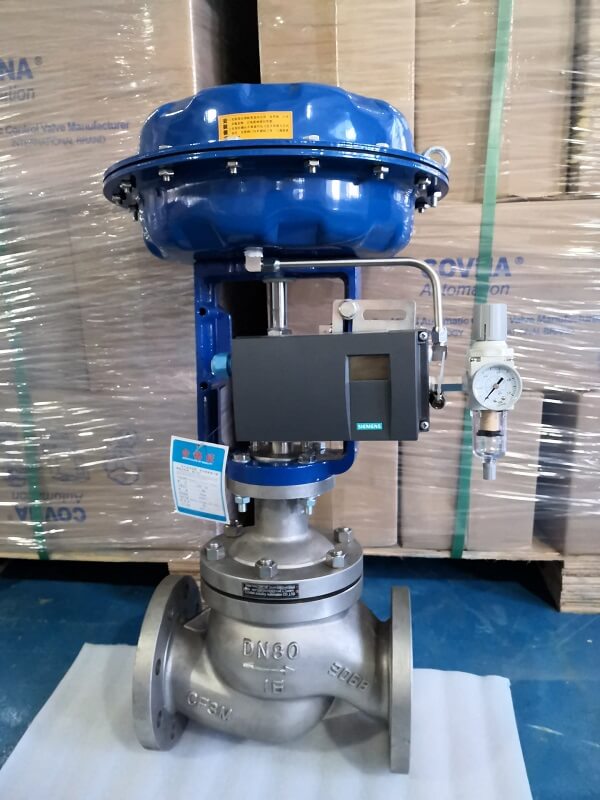Regulating valve also named control valve. The regulating valve is used to regulate the flow, pressure and liquid level of the medium. According to the signal of the regulating part, the opening of the valve is automatically controlled to achieve the adjustment of the medium flow, pressure and liquid level. The regulating valve is divided into electric regulating valve, pneumatic regulating valve and hydraulic regulating valve. Electric control valves and pneumatic control valves are the most commonly used.
The regulating valve is composed of electric actuator or pneumatic actuator and regulating valve. Control Valve is usually divided into straight single-seat control valve and straight two-seat control valve, the latter has a large flow capacity, imbalance and small and stable operation, therefore, it is usually suitable for high flow rate, high pressure drop and leakage less occasion.
The circulating capacity CV is one of the main parameters for selecting the regulating valve. The circulating capacity of the regulating valve is defined as: When the regulating valve is fully open, the pressure difference at the two ends of the valve is 0.1 MPA, and the fluid density is 1 g / cm3, the flow rate per hour of the regulating valve Known as circulation capacity, also known as the flow coefficient, to CV, the unit for T / h.
The nominal diameter DN of the regulating valve can be determined according to the CV value of circulating capacity.
The flow characteristic of the regulating valve is the relation between the relative flow of the medium flowing through the regulating valve and its opening under the condition that the pressure difference between the two ends of the valve is kept constant. The flow characteristic of regulating valve has three kinds: Linear characteristic, equal percentage characteristic and parabola characteristic. The implications of the 3 flux characteristics are as follows:
Equal Percentage (Logarithm)
The relative stroke and the relative flow rate of the same percentage have no linear relationship. The change of the flow rate caused by the change of the unit stroke at each point of the stroke is proportional to the change of the flow rate at this point. The percentage of the change of the flow rate is equal. So it has the advantage of small flow rate, small flow rate change, large flow rate change, that is, in different opening, with the same adjustment accuracy.
Linear Characteristic (linearity)
The relative stroke of the linear characteristic is linear with the relative flow. The change of flow rate caused by the change of unit stroke is invariable. When the flow rate is large, the change of the flow rate relative value is small, and when the flow rate is small, the change of the flow rate relative value is large.
Parabola Characteristic
Flow is proportional to the two sides of the stroke, and generally has a linear and equal percentage of the middle characteristics.
From the analysis of the above three characteristics, we can see that, in terms of its regulation performance, its regulation stability, regulation performance is good. But the parabola characteristic is better than the linear characteristic adjustment performance, may choose any kind of flow characteristic according to the use situation request.
Post time: Jul-28-2021





